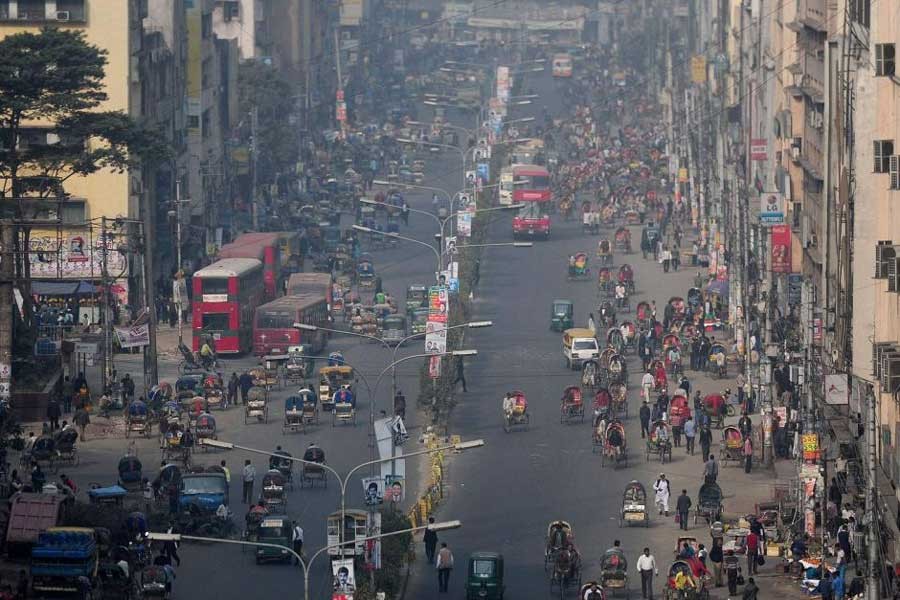On the basis of a writ petition filed by the Human Rights and Peace for Bangladesh (HRPB), the High Court directed the Department of Environment (DoE) last week to submit a report on what step it has taken to prevent air pollution in the city. The court also asked the DoE chief to appear before it on April 10 with the report.
The court felt disappointed as 'the authorities did not take proper action for preventing air pollution'. Although the DoE and city corporations conducted a number of mobile court drives against persons responsible for air pollution, the court said the DoE's action was not adequate.
Golbally, air pollution is getting worse day by day. It causes 790,000 premature deaths every year in Europe and 8.8 million worldwide, doubling recent assessments. The air quality of Dhaka has been ranked as third most polluted in the world according to a World Health Organisation (WHO) study. What is true about Dhaka is that the brick kilns in and around the metropolis Dhaka city are mostly responsible for the city's air pollution. The polluted air is being inhaled by the city dwellers, entering their lungs and causing different kinds of diseases. The brick kilns are causing 58 per cent of the air pollution in the city.
There is no denying that the air pollution in the city is worsening day by day due to the absence of monitoring. Experts say it is possible to control air pollution, especially the unusual growth of dust, if the authorities concerned carry out their duties properly. Dust pollution can be controlled to some extent if the authorities enforce relevant laws during construction of buildings and roads.
Dust pollution in Dhaka city is almost three times higher than the permissible limit during dry season. According to a study report, the level of dust pollution (particulate matter-PM10) is the highest 499 ugm/m3 in the dry season in Dhaka city, while the permissible level is 150 ugm/m3. The level of pollution can be reduced with the use of a water sprinkler above the chimney. As the technology is expensive, the owners are reluctant to use it.
Around 25 per cent of the people of Dhaka city suffer from lung function abnormalities due to higher air pollution. Such lung function abnormalities cause different types of airborne diseases, like bronchitis, pneumonia, asthma etc.
Air pollution is a well-known and much-complained-about reality in Bangladesh. During the dry season, when dust is terrible, pollution levels can reach up to 16 times higher than the World Health Organisation's (WHO) air quality guideline. This menacing proportion of pollution has made the city virtually unliveable. Urban air here is thick with fumes; water in the rivers, ponds and tube-wells is polluted, and the land is poisoned. Unchecked dumping of waste, a lot of it toxic, noxious emissions from vehicles and the pesticides used in farmlands are the main culprits.
Air in the city becomes extremely polluted between October and March every year when rain is scarce and when thousands of brick kilns become operational, burning used automobile and rickshaw tyres, low grade coal and in many cases, fuel-wood.
Sadly enough, laws exist to book a polluter, but the enforcers shy away from using the laws in most cases because of an unholy alliance with the vehicle drivers. In most cases, polluting vehicles drive away emitting noxious fumes in the presence of the law enforcement personnel without being held up or booked.
The ecological hazards of air pollution and resource depletion pose a potentially catastrophic threat to the cities in Bangladesh. The government should take the environmental threats seriously, and create public awareness and undertake action-oriented programmes.


